History

"H.R.H. The Duke of York be applied to for his gracious permission to have the said Lodge in future called The Royal York Lodge".
H.R.H. Frederick Duke of York was the second son of George III. He had been initiated in the Britannic Lodge No 29 on 21st November 1787.
On 28th January 1823 the Lodge met for the first time in Brighton at the Royal York Hotel. At a meeting on 11th February, the following letter was read out:
"Mr Deighton is directed by the Duke of York to acknowledge the receipt of Mr Altenacker's letter and to acquaint him that His Royal Highness will readily acquiesce in the wish of the Masonic Members of the Royal Cinque Port Lodge that it should in future be called the Royal York Lodge, whenever the subject is brought forward in the usual form".
Horse Guards, 8 January 1823.
On 1st March 1823, a resolution was passed to meet on the first Tuesday in each month (in 1864 the By-Laws were altered to exclude meetings in May, June, July and August) and this has been observed to the present time. On 24th July 1823, according to Francis' 'History of Freemasonry in the Province of Sussex', "Their (the Lodge) proceedings being considered somewhat irregular, the Lodge was suspended by the Provincial Grand Master, the Duke of Richmond, who had been recently appointed to that office, at a meeting of Provincial Grand Lodge held in Brighton". The Lodge was quick to respond and after making its case, the suspension was lifted.
On 3rd February 1824, the Lodge moved to Freemason's Hall, St James Street (now Nos 59 & 60 St James Street). On 8th May, the Lodge, with the Royal Clarence Lodge, assisted in the laying of the Foundation Stone of the Parish Church of St Peter in Brighton.
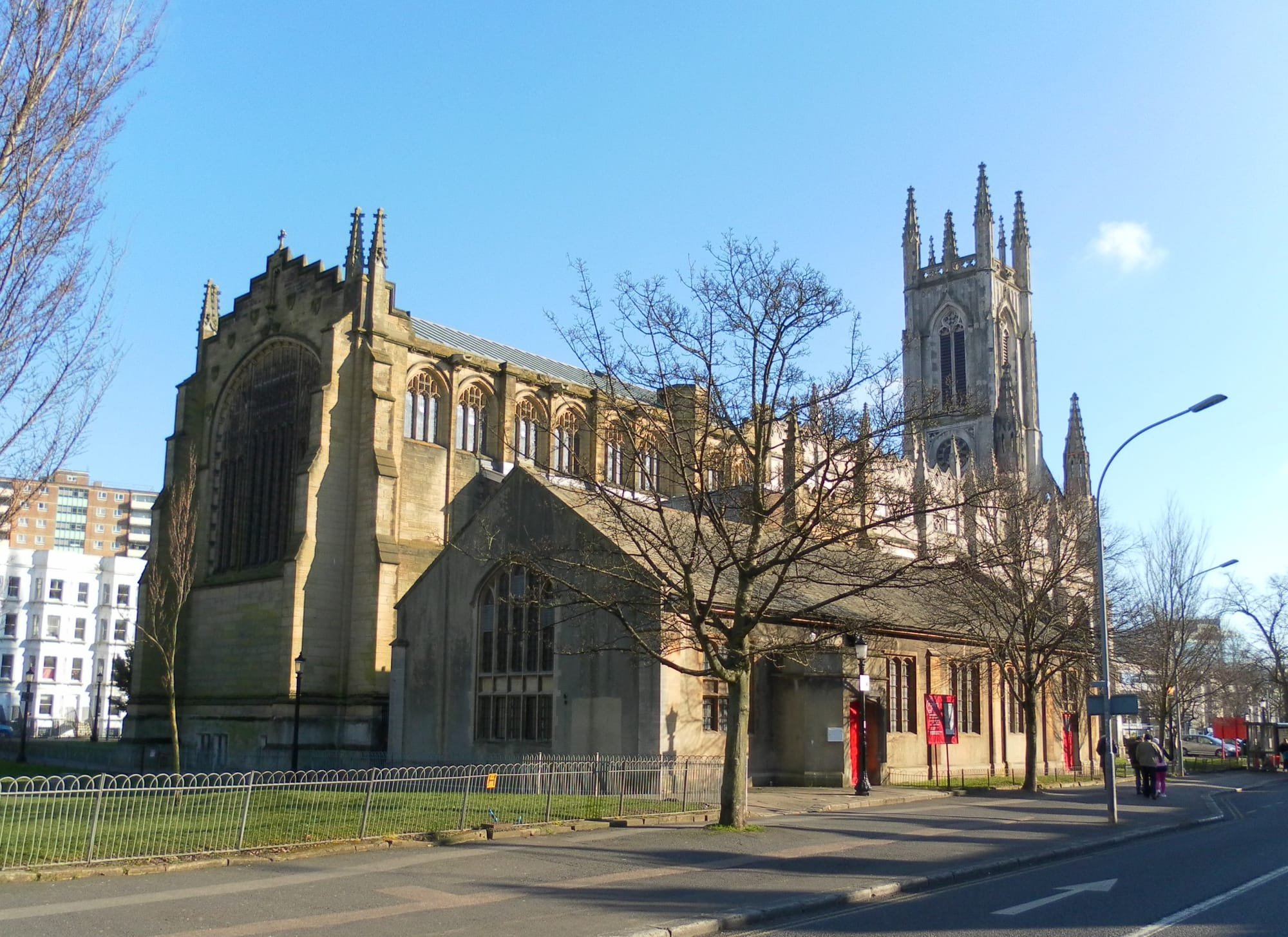 St Peter's ChurchIn 1826, because of the dangerous state of Freemason's Hall, the Lodge moved to the Tierney Arms, Edward Street. Two years later it moved to the New Ship Tavern, Ship Street and two years later, in 1830, it moved to the Artichoke Inn, William Street.
St Peter's ChurchIn 1826, because of the dangerous state of Freemason's Hall, the Lodge moved to the Tierney Arms, Edward Street. Two years later it moved to the New Ship Tavern, Ship Street and two years later, in 1830, it moved to the Artichoke Inn, William Street.On 20th October 1831, the Lodge assisted at the laying of the Foundation Stone of the Norfolk Bridge, Shoreham. The following year, the Lodge No. was changed from 587 to 394.
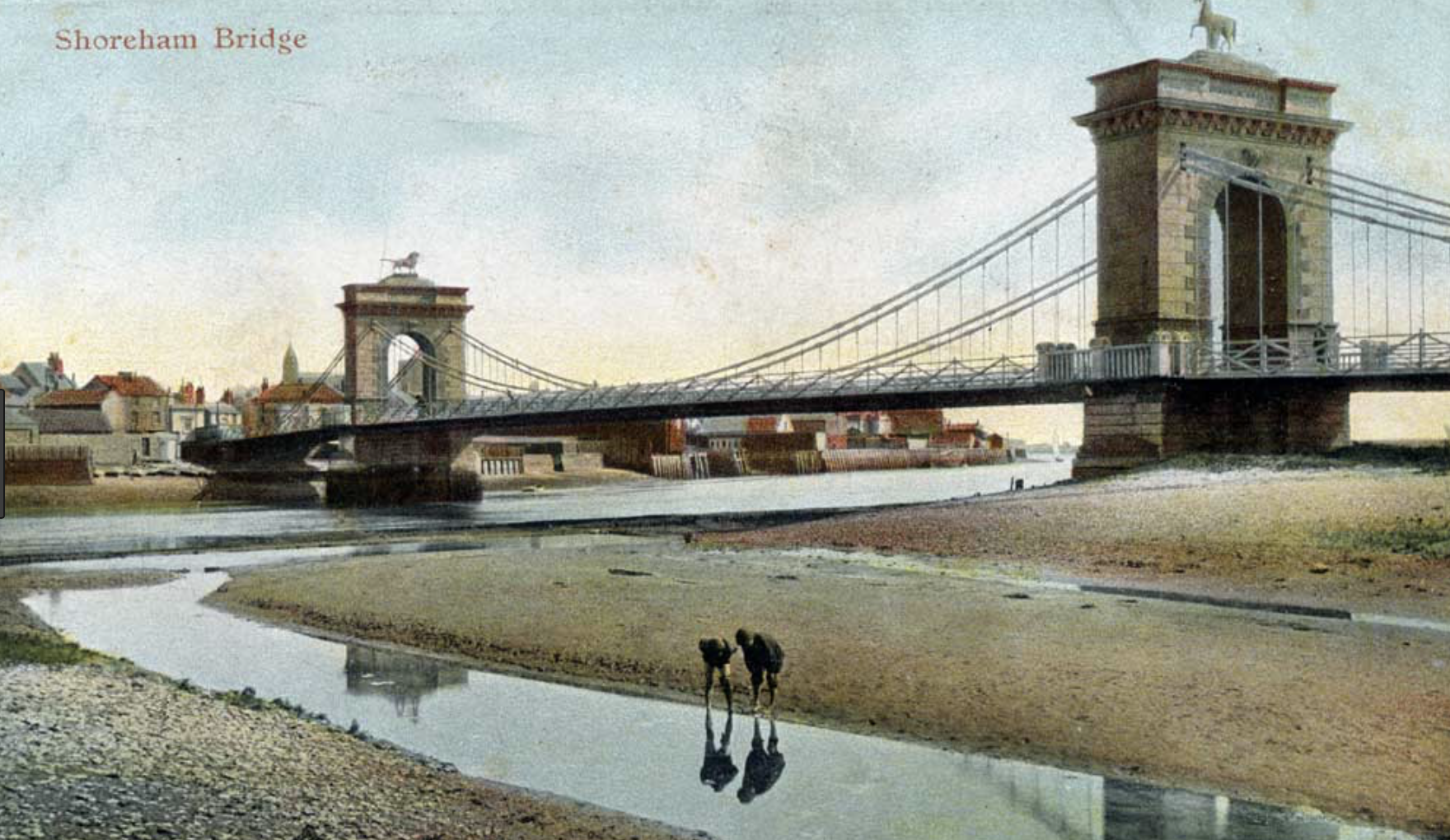 Norfolk Bridge ShorehamOn 6th December 1836, the Lodge moved to the Golden Cross Inn, Princes Street, now the Marlborough Pub, 4, Princes Street.
Norfolk Bridge ShorehamOn 6th December 1836, the Lodge moved to the Golden Cross Inn, Princes Street, now the Marlborough Pub, 4, Princes Street.Three years later, in 1839, the Lodge assisted in the laying of the Foundation Stone of the Railway Bridge in New England Hill and in the following year, the Lodge assisted in the laying of the Foundation Stone of the Adelaide Wing at the Sussex County Hospital.
In 1841 the Lodge moved to the Castle Inn, Castle Street.
On 4th October 1853, the Lodge moved to the White Horse Hotel, East Street. This was one of Brighton's famous Inns where, on 26th August 1789, the first Lodge in Brighton, the Royal Clarence, was consecrated by H.R.H. the Duke of Cumberland G.M. The hotel was demolished in 1869 for the site of Brill's Baths which themselves were demolished in 1929.
In 1855 the Lodge moved to the Old Ship Hotel, Ship Street.
On 7th December 1858, the Royal York Lodge of Masonic Instruction was formed and continues to this day. Meetings were first held at the Imperial Hotel in Brighton, but are now held at the Lodge's current location in the Sussex Masonic Centre, Queens Road.
On 4th August 1863, the Lodge No. was changed from 394 to 315, its current number.
On 1st September 1868, the Lodge moved to the Masonic Rooms at the Royal Pavilion and remained there for forty six years.
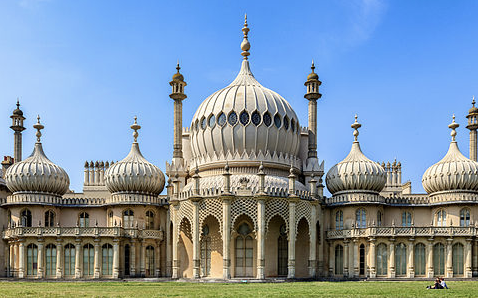 Royal PavilionOn 6th January 1874, the Lodge recommended a petition for the consecration of a Royal Arch Chapter and on the following 7th March the "Royal Pavilion Chapter No. 315" was consecrated and continues to this day.
Royal PavilionOn 6th January 1874, the Lodge recommended a petition for the consecration of a Royal Arch Chapter and on the following 7th March the "Royal Pavilion Chapter No. 315" was consecrated and continues to this day.On 28th October 1897, a Festival was held to celebrate the Centenary of the Lodge. Following the meeting, a dance took place to which many brethren and their wives were invited. The whole of the Pavilion Rooms were used and the services engaged of the Band of the 4th Royal Dragoon Guards.
On 1st December 1914, as a consequence of the Royal Pavilion being taken over as a Military Hospital for the Indian soldiers wounded in the Great War, the Lodge moved to the Sussex Masonic Club, Queen's Road. In 1915 the Lodge met at the Old Ship Hotel and then at the Metropole Hotel but returned to the Old Ship Hotel in 1920.
A dispensation, dated 24th December 1928, enabled the lodge to transfer its meetings in 1929 to its current location, the Sussex Masonic Centre, 25, Queens Road, Brighton where it remains to this day.
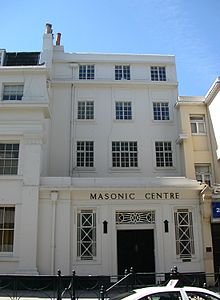 Sussex Masonic CentreOn 4th December 1973, the Breeches Bible, owned by the Lodge, was placed on permanent loan to the Sussex Provincial Library and Museum. It was originally presented to the Lodge by one of the book's owners, Leopold Altenacker. Breeches Bibles take their name from Genesis Chapter 3 Verse 7, which reads "and they knew that they were naked and they sewed fig leaves together and made themselves 'breeches'.
Sussex Masonic CentreOn 4th December 1973, the Breeches Bible, owned by the Lodge, was placed on permanent loan to the Sussex Provincial Library and Museum. It was originally presented to the Lodge by one of the book's owners, Leopold Altenacker. Breeches Bibles take their name from Genesis Chapter 3 Verse 7, which reads "and they knew that they were naked and they sewed fig leaves together and made themselves 'breeches'.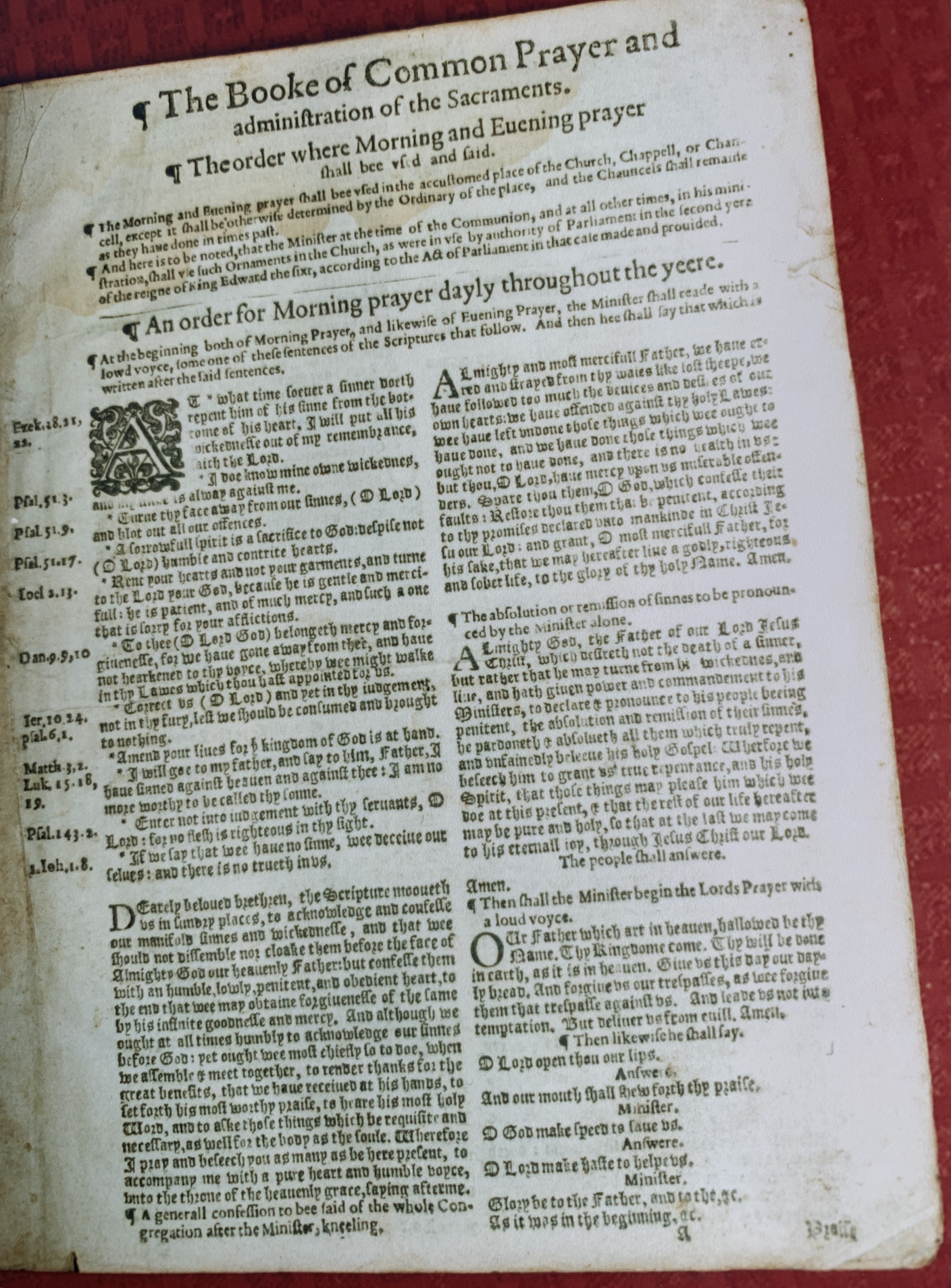 A Page from the Breeches Bible 1589
A Page from the Breeches Bible 1589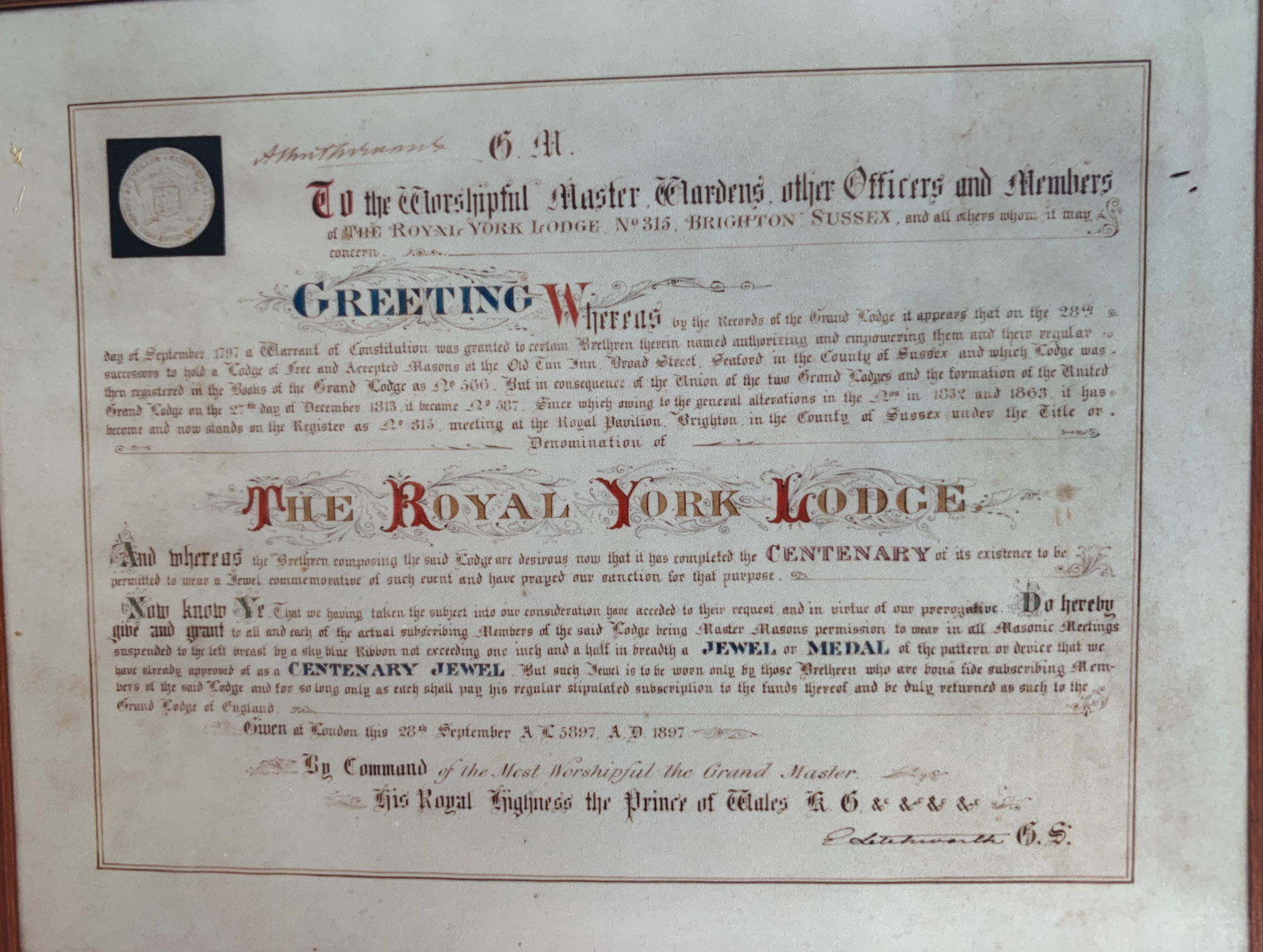 The Centenary Lodge Warrant dated 1897
The Centenary Lodge Warrant dated 1897


